PINETORUM Rose, 1905 (engl./ fr.)
Synonyms :
* Echeveria sessiliflora Rose (1905) - see below >
Echeveria sessiliflora var. pinetorum (Rose) von Poellnitz (1936)
** Echeveria huehueteca Standley & Steyermark (1944) - see below >
Series Mucronatae
*** Type : Goldman 1013, collected in pine woods 20 miles southeast of Teopisca, Chiapas, Mexico, May 8, 1904. - see below >
Etymology : Named for the occurrence in pine forests.
Distribution : Mexico (Chiapas, Oaxaca), Guatemala.
First Description by Rose in North American Flora 22: 20. 1905 :
Acaulescent, forming very dense rosettes of leaves.
Leaves bright-green, the margin tinged with red, narrowly oblanceolate, 2 - 4 cm long, 1 - 1.5 cm broad, rounded beneath, acute and mucronate-tipped.
Flowering stem, including the inflorescence, 10 - 25 cm long, bearing closely set leaves 2 - 3 cm long, below, and small ovate ones above.
Inflorescence an open-flowered equilateral raceme or spike.
Flowers subsessile, sepals ovate, acute, somewhat unequal, corolla 8 - 10 mm long, its lobes acute.
------------------------------------------------------------------
Description by E. Walther, Echeveria, 1972, (from a plant cultivated locally traceable to Dr. Rose) :
Glabrous.
Stem short or none.
Roots thickly fleshy, fusiform.
Offsets present.
Rosettes dense, with as many as 20 leaves.
Leaves narrowly oblanceolate, acute to acuminate, 2 - 4 cm long, 10 - 15 mm broad, rather thick, above flat or shallowly concave, rounded beneath, often denticulate when young, olive- to dull green-yellow, at edges tinged carmine.
Inflorescences one or two, equilateral, sometimes unilateral due to one-sided lighting, spicate, to 30 cm tall, peduncle erect, to 4 mm thick below, bracts appressed, obliquely oblong-obovate, acute to shortly acuminate, to 3 cm long, also denticulate (in type) at US National Herbarium, color as the leaves, upper bracts early deciduous, pedicels usually quite short, only rarely as much as 8 mm long, bibracteolate at least in bud.
Flowers 8 - 16, sepals unequal, longest 3 mm long, narrowly ovate, acute, olive-yellow, corolla 8 - 10 mm long, 6 mm in diameter near base, 4 mm at mouth, urceolate-cylindroid, scarlet at base, grenadine above, apricot-yellow at tip, petals scarcely spreading at tips, bluntly keeled on back, with distinct, if small, basal nectar cavitiy, inside lemon-chrome, nectaries reniform.
Cytology : n = 14, 15.
Link to a summary of the above description in French.
Note :
*1. The types of E. pinetorum and E. sessiliflora have been collected at the same locality : 20 miles southeast of Teopisca, Chiapas, and at the same time : May 8 and May 24, 1904, and both have been described by Rose in 1905. The descriptions are almost identical, the only difference worth mentioning is the colour of the leaves : E. pinetorum has green leaves with red margins while E. sessiliflora has pale blue leaves which are somewhat glaucous. This means that Rose did not describe two different species but two a bit different clones of one and the same species. He already was aware that the true relationship of E. pinetorum is with E. sessiliflora.
(In habitat green and bluish leaved forms are found growing together.)
E. Walther also agreed that E. pinetorum is rather close to E. sessiliflora. However unfortunately and not understandably he considered E. corallina as identical with E. sessiliflora and published the latter with the description of the former with the result that E. pinetorum and E. sessiliflora henceforth appeared as two distinct species.
Thomas Macdougall, the collector of E. corallina, already in 1972 draw attention to Walther's error but none of the subsequent authors dealing with genus Echeveria made an effort to correct it and to reinstate E. corallina as distinct species not to be confused with E. sessiliflora.
To reinstate E. corallina as species releases E. sessiliflora from the wrongly attributed description and brings to light its almost complete analogy with E. pinetorum.
The distribution area of E. pinetorum is vast and Uhl states that the species is variable in the size of its leaves and flowers. Also pedicel length is variable, from 0 to few mm.
** 2. Echeveria huehueteca has been described from plants found in Guatemala, Dept. Huehuetenango. Uhl is not convinced that it is identical with E. pinetorum from Chiapas and Oaxaca. However as long as there is no living material available, this problem remains unsolved.
*** 3. The original publication by Rose in North American Flora 1905 leaves no doubt that the n° 1013 originally was a Goldman number. On the holotype sheet (US 399735) it was first noted as such and later «corrected» to a Rose number.
3. Whether Fig. 282, p. 208, in Pilbeam, The genus Echeveria, 2008, of a 13 cm (!) wide seedling really shows E. pinetorum is rather doubtful.
Plants in habitat in Mexico :
Plantes dans l'habitat mexicain :
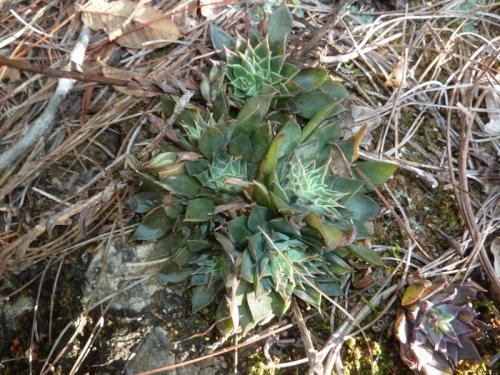
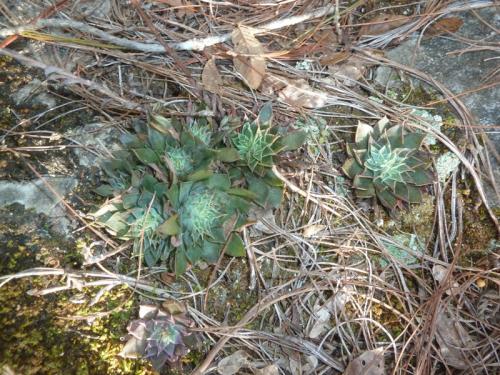
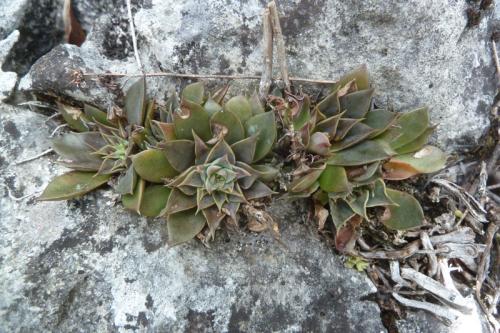
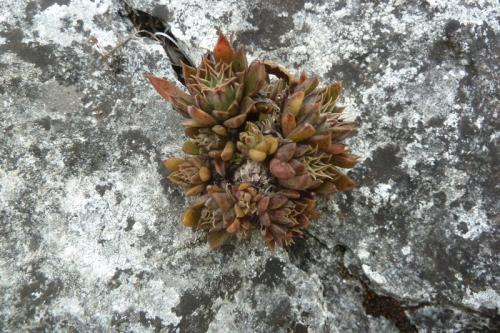
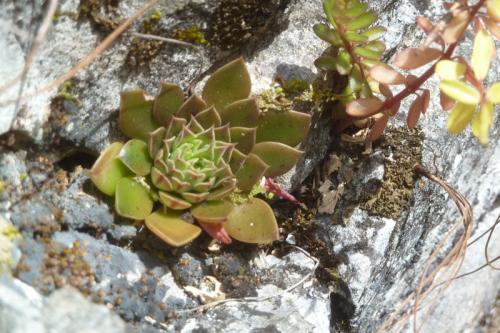
Photos Gerhard Köhres
In Chiapas :
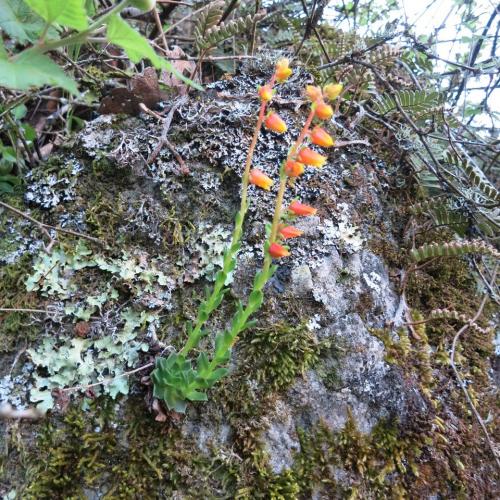
Photo Catherine Phillips
Two different forms of E. pinetorum in cultivation :
Deux différentes formes d'E. pinetorum en culture :
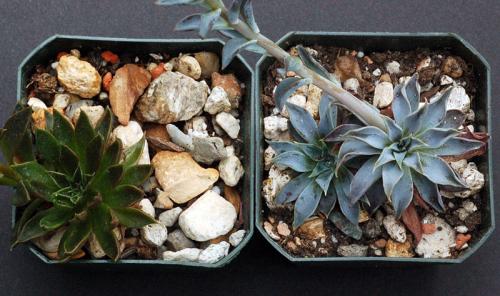
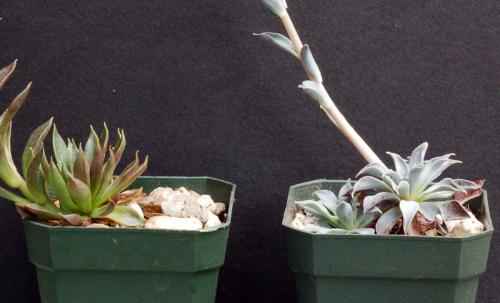
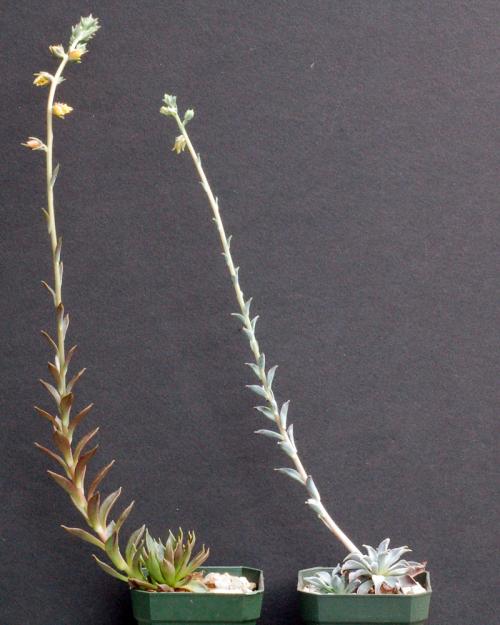
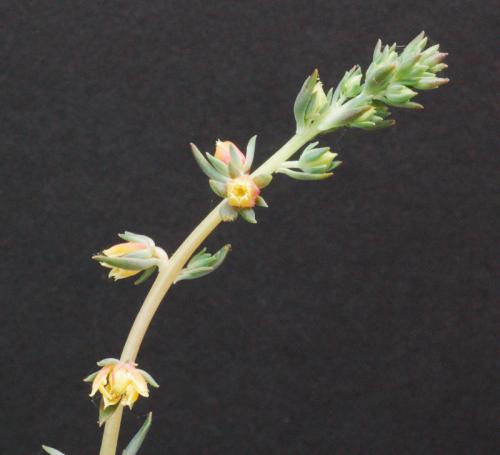
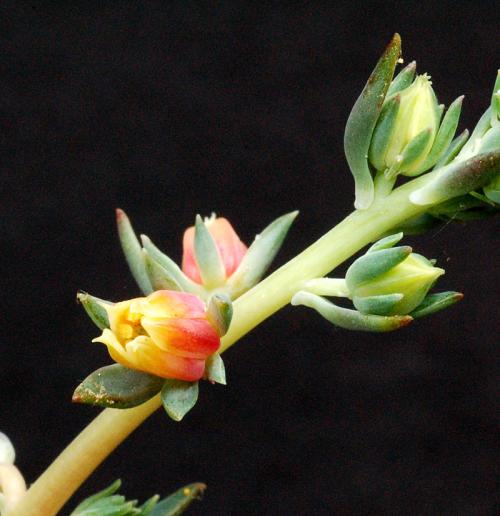
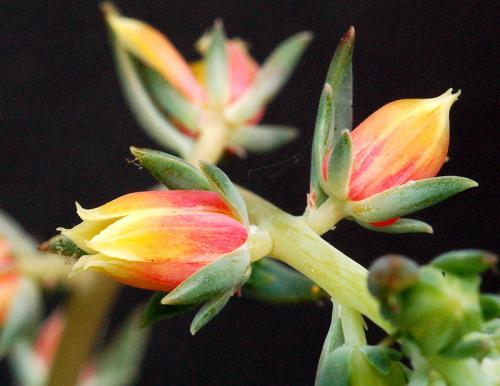
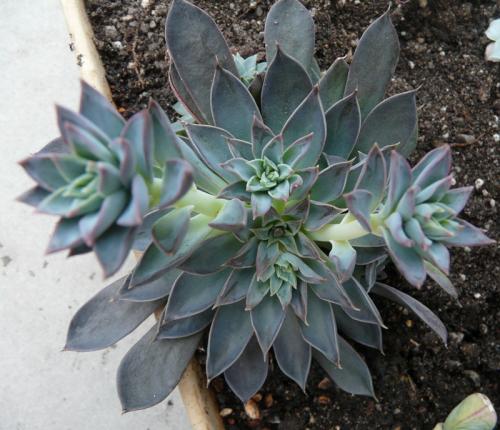
Photo Margrit Bischofberger